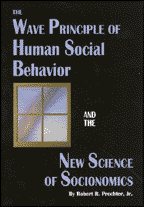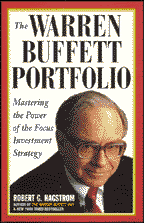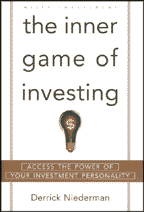 |
 The Wave Principle Of Human Social Behavior And The New Science Of Socionomics (463 pages, $39 hardcover, 1999, ISBN 0932750494), by Robert R. Prechter Jr., published by New Classics Library. R.N. Elliott's discovery of the Elliott wave theory 60 years ago was a major breakthrough in sociology. He discovered that the stock market displays fractal geometry, he discovered and described the component patterns and how they link together, he recognized (with the help of Charles Collins) the basis of the patterns in Fibonacci mathematics, and he concluded from all this evidence that human social progress regulates itself according to natural laws of growth and expansion that are found throughout the universe. The practical value of the wave principle is that it forms the basis for a new science, the science of socionomics.
New Classics Library The Wave Principle Of Human Social Behavior And The New Science Of Socionomics (463 pages, $39 hardcover, 1999, ISBN 0932750494), by Robert R. Prechter Jr., published by New Classics Library. R.N. Elliott's discovery of the Elliott wave theory 60 years ago was a major breakthrough in sociology. He discovered that the stock market displays fractal geometry, he discovered and described the component patterns and how they link together, he recognized (with the help of Charles Collins) the basis of the patterns in Fibonacci mathematics, and he concluded from all this evidence that human social progress regulates itself according to natural laws of growth and expansion that are found throughout the universe. The practical value of the wave principle is that it forms the basis for a new science, the science of socionomics.
New Classics Library
PO Box 1618
Gainesville, GA 30503
phone 800 336-1618, 770 536-0309
Fax: 770-536-2514
https://www.elliottwave.com
BACK TO LIST |


